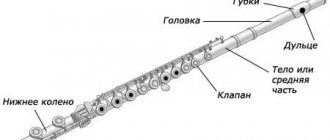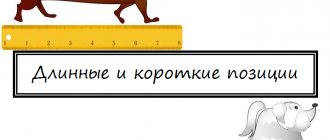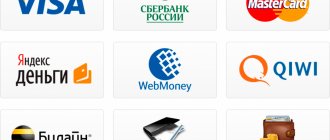Electronic money is one of the areas that makes it possible to facilitate the process of commercial activity. Using an electronic wallet, you can quickly pay for purchases and pay bills. Earnings and investments are made via the Internet, the user performs the necessary transactions at home, he does not need to go to a bank or post office.
Terminology
Digital money is a system for storing various currencies using modern technologies. In particular computers.
In simple terms, electronic money refers to cash flows stored in so-called electronic wallets. We can say that this describes a currency that circulates not in the form of cash, but in electronic payment systems.
An electronic wallet is a storage of digital money. A set of data available to a financial organization that emphasizes a citizen’s right to use certain finances. Often, electronic wallets are simply called payment systems.
Legal status
Since September 2011, electronic payment systems have been controlled by Federal Law No. 161. It reflects all the requirements for issuing organizations and the conduct of monetary transactions. Previously, this industry was controlled by different laws, but with the entry into force of the draft “On the National Payment System”, it became a single document regulating the relations of the parties.
From a legal point of view, electronic money is a perpetual obligation of the issuer to users of payment systems. The issue of funds is carried out as a credit limit or amount of obligations. The circulation of virtual money is carried out by assigning the right of claim to the issuer. Accounting is carried out using special software or electronic devices. As for the material form of virtual money, it represents information that is available to users around the clock.
The economic status of virtual money is a payment instrument that has the properties of traditional means or payment instruments, depending on the chosen method of implementation. What virtual currency has in common with cash is that users can make payments without using banking systems.
Electronic funds are similar to traditional payment instruments in that the client can transfer an amount or make a payment without opening an account with a financial institution.
Flaws
What are the pros and cons of digital money? Let's start with the shortcomings. After all, every user should know about them. And at the same time we will dispel some myths.
The disadvantages of digital money include:
- Legal regulation. In most countries, it is not yet entirely clear how to legally work with electronic media. In addition, there are official prohibitions on the use of digital money in some areas. For example, they will not be able to pay for the purchase of an apartment or car.
- Daily life. Another very dubious drawback. Not everyone is familiar with digital money. And they can't be used everywhere. Some people claim that it will be possible to work without problems with electronic means only on the Internet. In practice this is not the case. Especially when you consider that the majority of electronic payment systems offer a special form of storing money (more on that later). This service allows you to freely use available funds.
- Difficult to use. Digital money today is strongly tied to technological progress. Just a few years ago this feature was a serious drawback. For example, if a person’s internet or electricity is cut off, they will not be able to access funds.
We have studied the disadvantages of electronic money. But they also have enough advantages. After all, today users are working more and more with a similar interpretation of tools.
Safety
Despite the fact that electronic money systems are currently very reliable, users still manage to lose their money. The reason is either ignorance of the banal rules of safe work on the network, or laziness. Therefore, below I will give simple but effective methods of protection.
Antivirus. Such a program must be installed on the computer. And it is imperative that it be updated, that is, it always has up-to-date anti-virus databases. It is better, of course, to use paid products like Kaspersky Anti-Virus, but if this is not possible, use free Avast.
Strong password. Use a password of at least eight characters. It is better if these are both letters and numbers. Moreover, the letters are both uppercase and lowercase. Do not use your date of birth, phone number, or other personal information in your password.
Identification. This is a procedure that allows the payment service to see you as a respectable user. It concerns mainly Russian electronic money systems. Its meaning is that you need to indicate real passport data and show the document to an authorized person. Then your status will change and this will give certain advantages.
In addition, this will provide additional protection against scammers. After all, according to the law, if money is stolen from the account of an identified user, the system is obliged to return it (provided that he contacts the support service no later than 24 hours after the money is written off and the system confirms the fact of hacking).
In Yandex.Money and QIWI, the procedure for confirming your identity is called identification, and in Webmoney it is called certification.
By the way, many payment services greatly reduce the opportunities for “anonymous” users. For example, Yandex.Money prohibits such users from receiving and sending funds to other wallets, or making transfers to bank cards and accounts.
Address verification. Before entering your wallet number (login) and password to log in, check whether the site is open correctly.
Fraudsters often send fake emails purporting to be from the electronic money support service. For example, that a payment has been received into your account or, conversely, that the account has been blocked. Such messages may look very believable, but when you click on the link from the letter, a fraudulent site opens. Moreover, it usually looks the same as the real thing.
Only the site address is different. And if the user does not notice this and enters his data, the attacker will immediately receive it and be able to withdraw money. Therefore, before logging into your wallet, look at the address bar of your browser. The correct payment system address must be written there.
Additional protection. If the payment service has additional protection, you should enable it. This is done in the wallet settings. Usually this is login protection or confirmation of payments via SMS message. That is, until the code sent in the message is entered, the operation will not be performed. In this case, even if an attacker enters your password, he will not be able to withdraw anything from the account.
Reading documentation. Each system has a knowledge base. Usually this section is called “Help”, and it tells everything about the rules and features of the service. Of course, there is a lot of information, but I highly recommend that you study at least the basics. And also check out the tips for protecting your wallet from Yandex.
And most importantly: never give out your wallet password or card details!
Positive sides
Now about the positives. Electronic money is very convenient. It is important to understand that the bulk of their shortcomings are already being perfectly eliminated. In particular, if you choose a good storage facility.
So, the advantages of digital money include:
- Mobility. For digital media there is no concept of size. In addition, a person will always be able to use his money. All funds will be at hand. This is very captivating. You no longer need to stand in line to pay receipts and taxes; you can easily transfer money anywhere in the world.
- Full automation. There is no human factor when working with digital money. All operations are performed by computers and then recorded. In electronic payment systems there is no concept of change. And thanks to saving the history of transactions, a person will be able to understand where this or that money went.
- Safety. It is almost impossible to lose electronic funds. They will not be stolen from your hands, and a person will not forget where he put them. All finances are stored in a special electronic wallet. Electronic money can only be lost if the corresponding storage facility is hacked. Fortunately, such situations are extremely rare.
- Freedom. When working with digital finance, the user may not provide information about himself. For most operations, it is enough to know the account details of the recipient of the funds.
- Comfort of use. Today, technological progress does not stand still. And now digital money can be used almost everywhere. The main thing is to choose the right e-wallet. Paying digitally is allowed wherever there is cashless payment.
As you can already see, the components being studied have a lot of advantages. But what else do users need to know? How to work with electronic money and wallets?
3) A brief history of the emergence of electronic money.
Let's talk about the history of electronic money.
Until the end of the 19th century, payments were made in cash (“tangible”) money. Over time, the need arose to manage your funds more effectively. With the development of computer technology, paper media increasingly began to be replaced by electronic media.
In the 80s of the 20th century, microprocessors began to be installed in plastic cards. It was then that significant changes began to occur.
In 1982 , American scientist, computer scientist and cryptographer David Chaum proposed the idea of a blind signature in his work, which is considered the beginning of the history of secure digital money.
In 1989 , he founded the company DigiCash . DigiCash became involved in electronic transactions, where Chaum's cryptographic protocols allowed anonymous payments.
In 1993 , DigiCash created the first digital currency not controlled by central banks by issuing one million “Cyberbucks” tokens. The user, using special software, generated a large random number used as the number of the electronic banknote. This number was then placed in a money file in which the denomination of the banknote was publicly available. The file was signed with the user's electronic signature and sent to the issuer. The issuer, having received a file from the user, checked whether the electronic digital signature corresponded to the digital signature of the user from whom it was sent. If the signature matched, the issuer placed its digital signature on the file, certifying that it contained the number of the electronic banknote whose denomination was indicated in it. (The concepts of electronic signature and blind signature are discussed in detail below)
In 1994 , the central banks of the European Union officially recognized the existence of electronic money by analyzing prepaid cards that were then considered electronic money. Prepaid cards are media on which the value is encrypted in a special way. You can encrypt money, minutes, and the number of trips on such cards (for example, the familiar troika). They are usually anonymous.
Next, many Internet wallets were created, with the help of which users were given the opportunity to convert real money into electronic money and vice versa and exchange digital money on the Internet.
Examples of digital media
It is important to understand that electronic money is different. And they all allow you to work with different currencies. Therefore, it is not entirely clear how digital media differ. It is customary to classify them by storage systems.
Let's look at the most common types. Examples of digital money:
- cryptocurrency;
- "Yandex. Money";
- PayPal;
- Qiwi;
- Webmoney.
These are not all types of electronic media. But users work with the listed options most often.
Which system to choose
For work. On the Russian-speaking Internet, Webmoney or Yandex.Money is most often used, on the English-speaking Internet – PayPal. If you have a choice, I recommend choosing Yandex.Money. They are easier to put on and take off. And the system itself is simpler.
For life. If electronic money is needed to pay for games, buy OKs on Odnoklassniki or Golosov on VKontakte, then it is better to choose QIWI or Yandex.Money.
Through these systems, you can instantly issue a virtual card and make payments throughout the Internet, including on foreign sites (ebay, aliexpress and others).
Blurred concept
The definition of digital money is vague. On the one hand, we found out what it is. On the other hand, some people claim that any non-cash transactions are actions with electronic means. Is it really?
Yes and no. After all, many banks offer Internet banking. In this case, the funds will be stored in an account opened in advance, and management will be carried out using computer technology. Therefore, it is not always possible to understand what digital tools are.
But as we have already said, this term is usually used to describe money stored on an electronic wallet. It is with this interpretation that we will work further.
Under control
Another feature of CBDC will be that each unit of currency will have an individual tag based on metadata - similar to the serial number of a banknote. Individualization of digital money may be required to control the targeted spending of subsidies: the state will ensure that the recipient of the benefit does not spend it on gambling or alcohol. Inexperienced investors may be warned against risky investments. In addition, smart contracts, currently used in transactions with cryptocurrencies, will become commonplace. A simple example: transferring payment to the seller’s account only after delivery of the goods to the buyer and checking its quality is an automated analogue of the letter of credit procedure, which takes a lot of time and involves a commission for the bank.
Among other things, authorities in different countries hope to make national economies more transparent by getting rid of shadow sectors that actively use uncontrollable cash. All income received in digital currency will go to the account of the employee, individual entrepreneur or company in the central bank, which means the government will know exactly how much taxes need to be paid on it.
Bank of Sweden
Riksbank. Photo: Arild Vågen / Wikimedia Commons
But there is another factor that experts talk about - the desire of different countries to increase their geopolitical influence through a kind of export of their digital money. Many assume that with the spread of CBDC, currencies will no longer be national and used by foreigners only to purchase goods and services in the issuing country, as is the case now (with the exception of a few reserve currencies, mainly the dollar, which are used for savings and settlements with third countries).
Any CBDC will be able to circulate anywhere, but transactions will be processed on the servers of the issuing state. This means that it will receive all information about transactions and tax information and will be able to sell it to the competent authorities of the countries of residence of foreign users - in addition to using it for its own selfish purposes. In addition, banks and companies from countries with a developed digital money system will be able to offer their services to their users, for example, financial or commodity loans on favorable terms, thereby displacing local competitors. CBDC and related technologies could become weapons of the new era, as a result of which the world will plunge into a new information-financial cold war. In this case, the status of the current main reserve currencies, the dollar and the euro, will be noticeably shaken.
About wallets and their use
We found out what electronic money is. An electronic wallet is a repository of relevant finances. Such payment systems are in great demand. Especially when shopping online.
Electronic wallets, like money, are diverse. Most often, people work with the WebMoney, Yandex. Money", "Qiwi", "PayPal". How can I use a wallet of one type or another?
The main functionality of the digital (electronic) money storage includes:
- paying bills (any);
- checking taxes and fines;
- payment for purchases on the Internet;
- payment for receiving certain services;
- mobile phone account replenishment;
- making money transfers.
Almost like a regular wallet with money! The difference is that cash does not appear in this case. Cashless payments only.
Under certain circumstances, the user can cash out digital funds. For example, by making a money transfer via the Contact system.
6) Withdrawing and depositing electronic money using a blind signature
The difference between a blind signature and a regular electronic signature is the imposition of a mask on the message. At the same time, the signature itself does not change when applying and removing the mask. Next, the message is an electronic coin (as described earlier, an electronic coin is some file in electronic form).
Electronic money withdrawal algorithm
- The client (K) generates a sequence and multiplies it by a randomly selected factor (masks the sequence).
- K encrypts the result and sends it to the issuer (E).
- E decrypts the received message with a secret key, signs the message with an electronic signature corresponding to the denomination of the coin, encrypts the message and sends it to K.
- K decrypts the message and removes the masking factor.
Algorithm for depositing electronic money
- K sends the message received from E back, after encrypting it with the public key.
- E makes sure that the money file has not been used, enters the money file number into the database and credits the corresponding denomination to K’s account.
Types of wallets
It is also important to understand that modern electronic wallets try to protect as much as possible. To achieve this, payment systems introduce various restrictions and several types of accounts.
The most common among them are:
- initial (anonymous);
- standard, formal (nominal);
- confirmed.
In the first case, the citizen does not provide any information about himself. Such wallets are severely limited in terms of storage limits in the account, transactions and amounts that can be withdrawn from the account per day/week/month. Formal certificates (profiles) require the user to upload passport data and provide personal information. This is the most common scenario. The wallet has large limits, but not all restrictions have been removed from it yet.
Confirmed accounts allow you to work with all options of a particular wallet. In this case, restrictions will be minimal. Usually you have to confirm your identity at the payment system service center (for example, in Euroset communication stores). Such certificates are used by individual entrepreneurs.
5) The essence of the idea of a blind signature
The essence of the idea of a blind digital signature can be easily understood from the artificial example described below. Let's imagine that a vote needs to be held. In this case, voters cannot be present at the polling station, but each of them wants to vote without the election organizer knowing what choice they made, and also to be able to make sure that their vote will definitely be counted. The problem can be solved if you use special envelopes made of carbon paper (shown in gray in the picture). The envelopes in the figure are numbered to show that they are different (there is no correlation with the items). Writing a signature on such an envelope will leave a similar mark on the ballots inside it. The ballot itself cannot be seen, since such an envelope is opaque. Voting will be carried out according to the following scheme:
- The voter places the completed ballot in the above-described copy paper envelope (for brevity, we will call it a special envelope), the special envelope is placed in an envelope made of plain paper (for brevity, hereinafter - a regular envelope, drawn in white). The outer regular envelope is marked with the address to which it needs to be sent back (the address of the voter himself). The resulting envelope is sent to the election organizer in an envelope.
- The organizer receives a compound envelope, takes out a special one, signs it in a unique way, places it in a new regular envelope and sends it back to the voter. Thus, only verified voters (those who have received a unique signature valid for this vote) will be able to vote.
- Having received the envelope, the voter takes out the ballot, checks for the organizer’s signature on it and sends it to the organizer on voting day in a regular envelope without mentioning his return address.
- The organizer receives ballots from each voter and places them on a public display. Each voter has the opportunity to count their votes and verify their unique signature. Moreover, if an individual voter remembers a distinctive detail of their ballot (for example, the texture of the paper, a torn piece in a certain place), then they will be able to find it on the display. The organizer, when signing the ballot, did not see it (he could only see a special envelope). Consequently, the anonymity of all voters is preserved.
I will briefly repeat the features of a blind signature. The user obtains a signature on the message without revealing the message itself to the signer; only the signer can create the signature. The concept of a blind signature should now be clear.
Spoiler
Basic information from cryptography.
The reader needs a brief introduction to asymmetric cryptosystems.
An asymmetric cryptosystem is a cryptographic system that uses two keys - a public and a private one.
The public key is publicly available, but the private key is kept secret. However, calculating a private key from a known public key must be a complex computational task.
In an electronic signature scheme, the owner of the private key can sign a message, and users, knowing the public key, can verify that the signature was made by the owner of the key.
About media
As we have already said, previously electronic funds were very problematic to use. But now this problem has been eliminated in many payment systems. The thing is that digital money can be stored on different media.
The following scenarios are possible:
- electronic invoice (required);
- bank card linked to the wallet;
- virtual card.
When opening an electronic wallet, the user is required to be issued a special account (like a bank account). This is the money depository.
Many services like Yandex. Money" allow you to produce special bank cards linked to an electronic account. Under such circumstances, all the money in the wallet immediately ends up on the card. It is very comfortable! Thanks to this feature, digital funds are now almost no different from money stored on a bank card of a regular bank.
A virtual card is an analogue of a physical medium. Used for ease of use on the Internet. With the help of such “plastic” you can pay for purchases on the Internet with special comfort. A striking example of such a product is the WebMoney card.
Other types of classifications
Currencies are also classified according to storage method. If we are talking about hardware, in this case the finances are on a chip, the carrier of which is a plastic card. If they are stored on a software basis, then we are talking about digital money that is stored on the computer’s hard drive. To transfer such funds, special computer software is required.
Based on the method of data processing, centralized and decentralized systems are divided. In the first case, information about transactions using such money is displayed in a centralized bank. When using decentralized tools, there is no control at all.
The most popular payment systems in Russia are:
- Yandex money;
- MoneyMail;
- QIWI;
- Skrill (formerly MoneyBookers);
- WebMoney;
- Rapida;
- RBK Money;
- PayPal;
- Mondex,
- "One Wallet";
- Z-Payment;
- Liqpay;
- NETELLER;
- PayCash.
Based on smart cards
This type of digital money is a plastic medium with a microprocessor on which is recorded the equivalent of the cost paid by the client to the original issuing organization in advance. Cards are issued by banks or non-banking organizations. Using plastic, the client can pay for purchases and services at all points of acceptance of such a payment instrument. Cards are issued multi-purpose or branded (telephone, for example). The tool is suitable for making a payment transaction or withdrawing funds through an ATM.
Among the variety of plastic cards, there are two types: debit (for storing one’s own funds, savings, payments) and credit (the owner of the plastic card spends money within a certain limit, which will then be required to be reimbursed to the issuing organization). A popular option for digital cash based on smart cards are products of the VisaCash and Mondex payment systems.
Fiat and non-fiat money
There is another classification of virtual money. They are divided into fiat and non-fiat. The first type includes the monetary units of a specific country, expressed in the national currency. The issue, circulation, cashing and conversion of fiat money is ensured by state legislation.
The second option is a currency issued by a non-state payment system. Government authorities of different countries control the issuance and circulation of non-fiat money to a certain extent. This option refers to a type of credit money.
Beginning of work
How to get started with an electronic wallet and digital money? It is enough to register in one or another payment system.
For example, you can do this:
- Go to the Webmoney website.
- Click on the “Registration” button.
- Provide your mobile phone number.
- Click on the “Continue” button.
- Fill out the registration form. Here you must indicate the e-mail that will be linked to the wallet.
- Create a login password and repeat it.
- Click on the “Register” button.
- Confirm the operation. To do this, you need to enter a special code sent by SMS.
That's all. Now the user will have a “WebMoney” wallet. The user will see his account, which will allow him to work with digital means. In your “Personal Account” you can upload scans of your passport and receive a formal certificate.
Useful terms
Let's get acquainted with some terms used in the practice of electronic payments.
Clearing organization. Transfers monetary value and information within the created financial structure.
Clearing House. A center through which banks and association members exchange financial information. Responsible for making payments according to established rules and at the appointed time.
Online wallet. Reloadable multi-use prepaid card. Used for micropayments.
Issuer. The company or bank that issues the relevant payment instrument.
Payment system. Consists of organizations, financial instruments, banking procedures that ensure cash payments.
Prepaid card. A card that the holder has paid in advance to the issuer.
Electronic payment. Payment made using software and hardware according to established rules.
Virtual card
A WebMoney card can be issued only after the user gets rid of the anonymous profile. This means virtual “plastic”.
To order it you need:
- Log in to your wallet.
- Open the WM map page.
- Click on the “Order” button.
- Select the type of plastic.
- Click on the “Next” button.
- Indicate whether SMS notification is required.
- Check the box next to the “Confirm” line.
- Click on the “Confirmation” button.
- Pay for plastic through the Merchant system, indicating the details from your bank card.
Ready! Now you can use the virtual card. This task does not cause any difficulties.
Now we can summarize what cryptocurrency is in simple words
Digital money functions as a self-sufficient organism. Instead of real reinforcement with resources, they offer the user complete independence and absolute reliability. Otherwise, they obey the usual laws of the market and perform the same functions as all other money in the world. The life cycles of cryptocurrency are so natural that it can be shown in simple words using an allegorical example.
What is cryptocurrency in simple words? Simple example:
Imagine that a meteorite made of monstrously valuable stellar material fell from the sky. It exploded somewhere in the air and scattered into millions of pieces throughout the planet. Storing savings in meteorite fragments has become even more profitable than in gold. At first, the fragments were lying around everywhere, they were collected by everyone, but over time, the unfound parts became less and less, and people began to unite in search teams and pool their money to buy powerful search devices. The pieces are very useful in everyday life, so each person keeps them at home and does not hand them over to the bank, which means that no check books are needed and there is no need to pay anyone for mediation. Occasionally, new meteorites arrive from space: they have a slightly different composition, they break up into fewer parts, so their exchange rate is slightly lower. It is impossible to fake a meteorite, so there will be no oversupply (and depreciation) of meteorites, which means there will be no crises in such an economic system.
Fantasy? Absolutely, but it sounds tempting, doesn't it?











